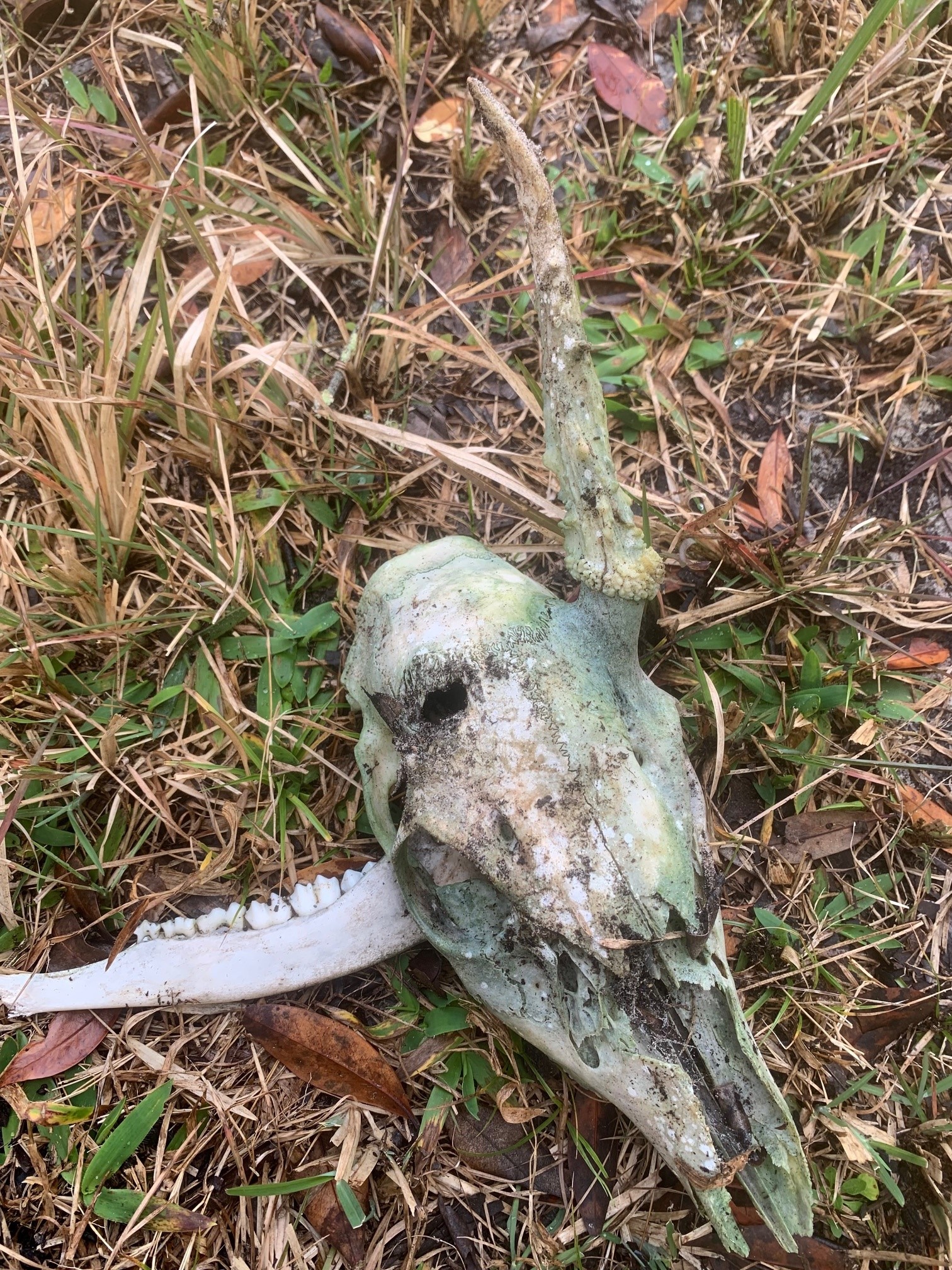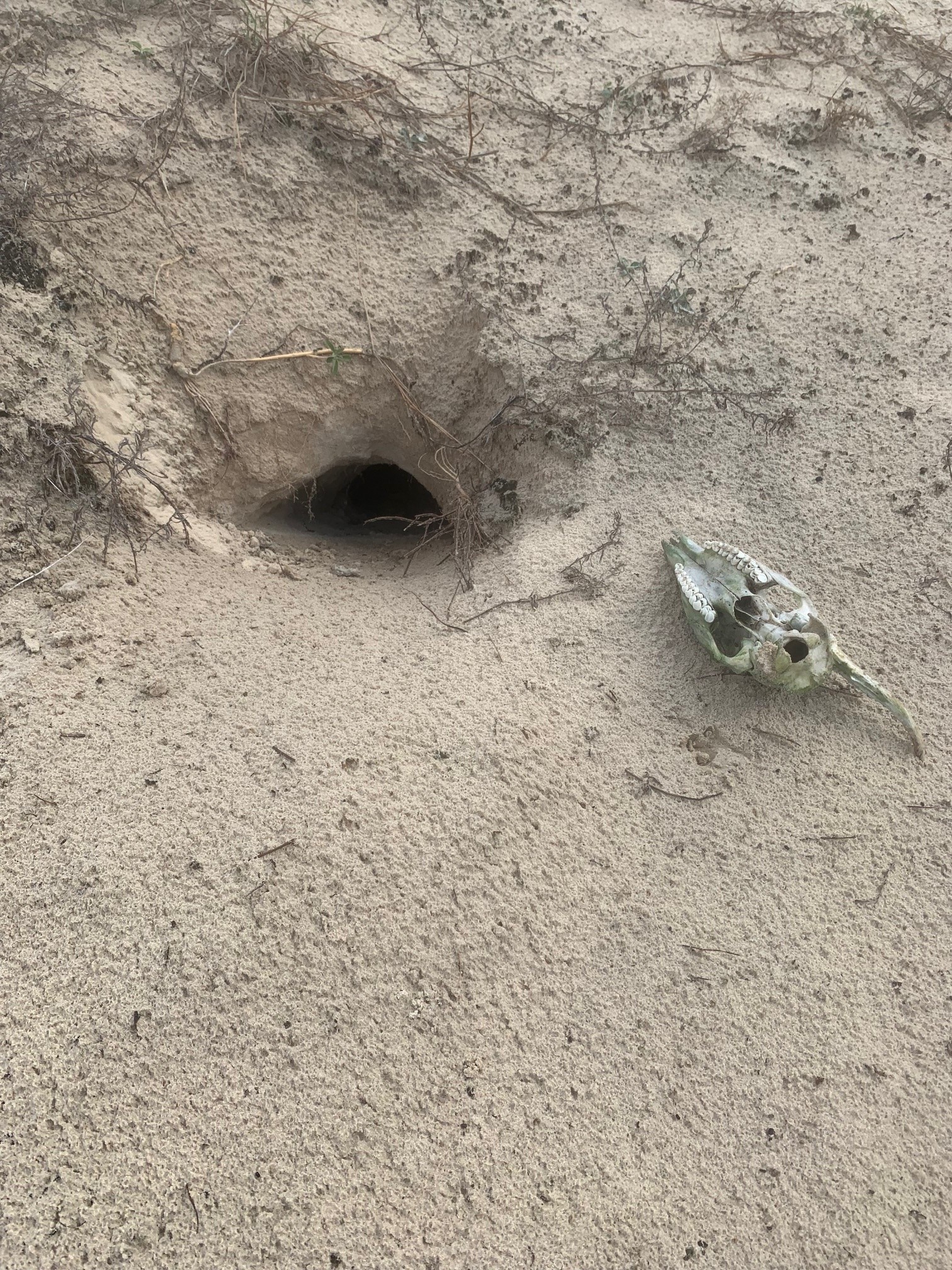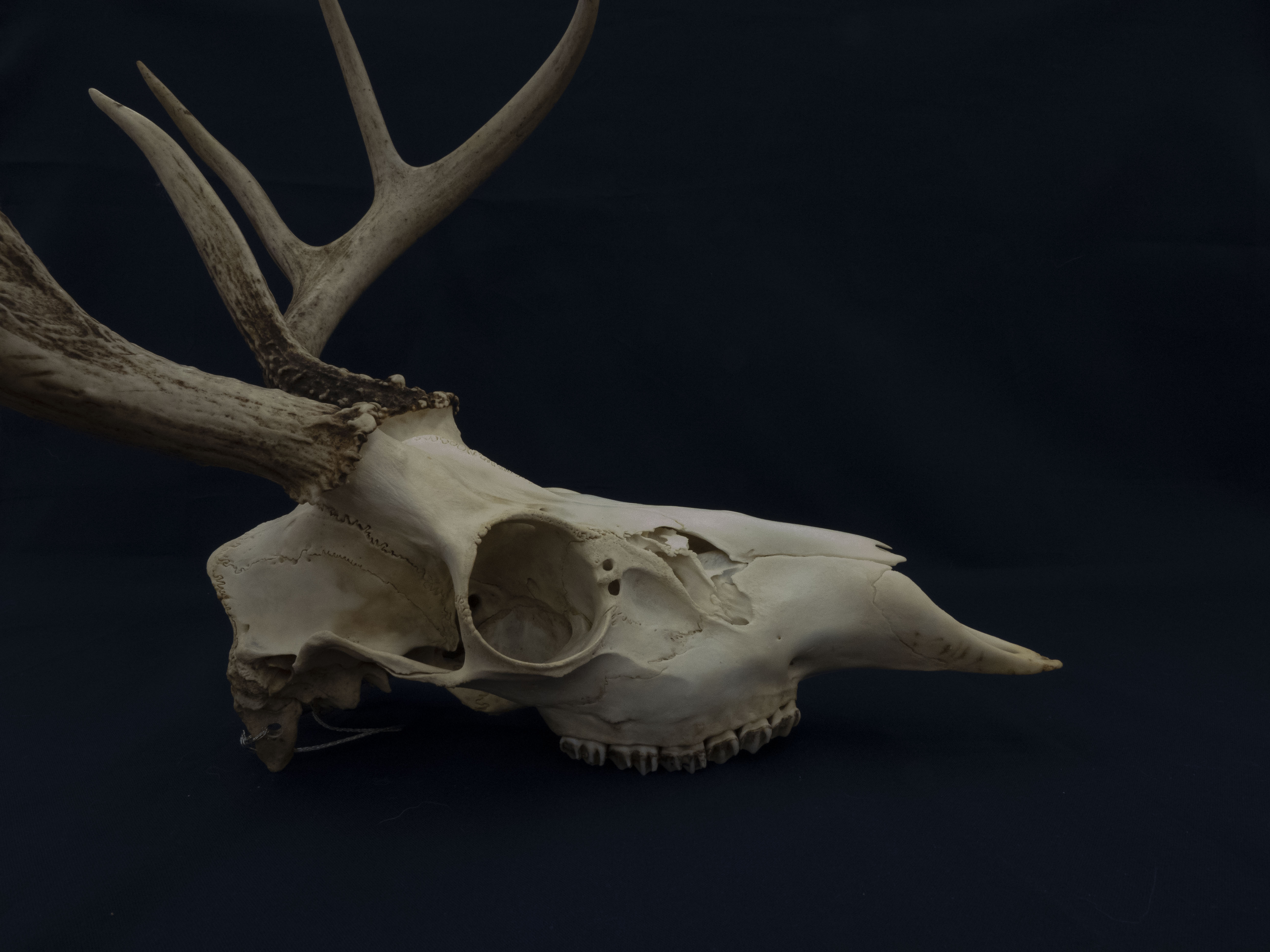Cumberland Island National Seashore is home to one of my research projects. I reintroduced bobcats on the island back in 1989-1990 and I continue to monitor the population annually by collecting their scat and using DNA to identify individuals. From the genetic data, I can estimate abundance, survival, relatedness, and inbreeding. All cool stuff, but not the subject of this post (yes, it’s deer!).
We collect scat by covering Cumberland Island on foot – we walk roads, hiking trails, interdune meadows, and salt marsh edge. During those hikes, we come across all sorts of natural and man-made items.
There are white-tailed deer on Cumberland Island and while walking the interdune meadow, I came upon the skeleton of a buck. It had a single spike antler on its left side, but that wasn’t the interesting part. On the right, it lacked an antler and instead had a hole in its head.
See for yourself.

I’ll let Jeannine tell you all about what killed this fellow, but here are some questions to ponder.
How old was he when he died? What time of year was it? Does that help you diagnose the cause of mortality?
By the way, after I found the skull I had another interesting find in the side of a dune. The skull provides some scale for perspective.

It’s a gopher tortoise burrow. The gopher tortoise is an endangered species, native to the southeastern U.S. and is considered a keystone species because 350-400 other species depend on their burrows for survival. Some species use abandoned burrows, other species the tortoises share the space. Maintaining longleaf pine habitats with prescribed fire is important to ensuring quality habitat for tortoises, but as you can see they also live in sandy dunes.
-Duane Diefenbach
